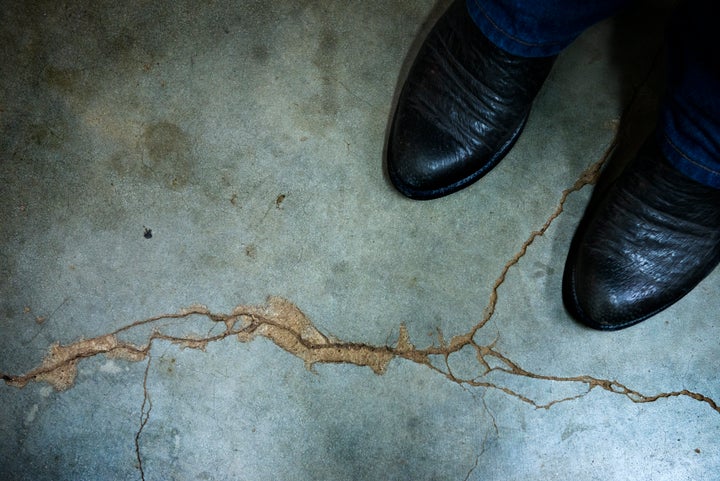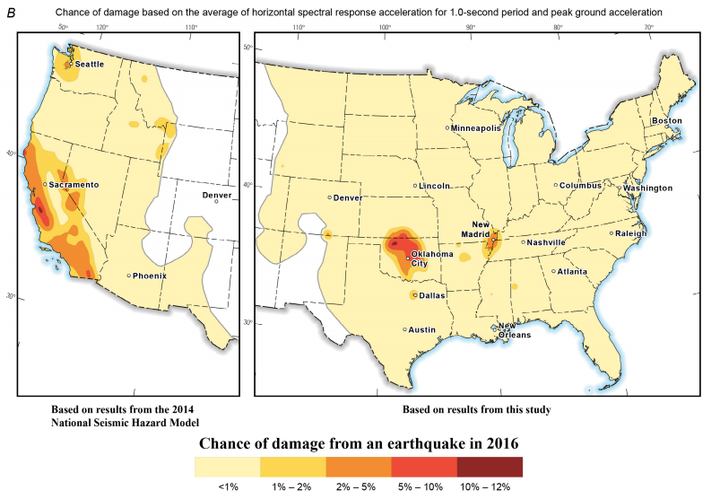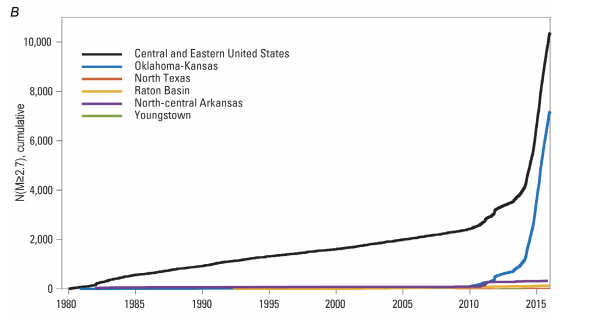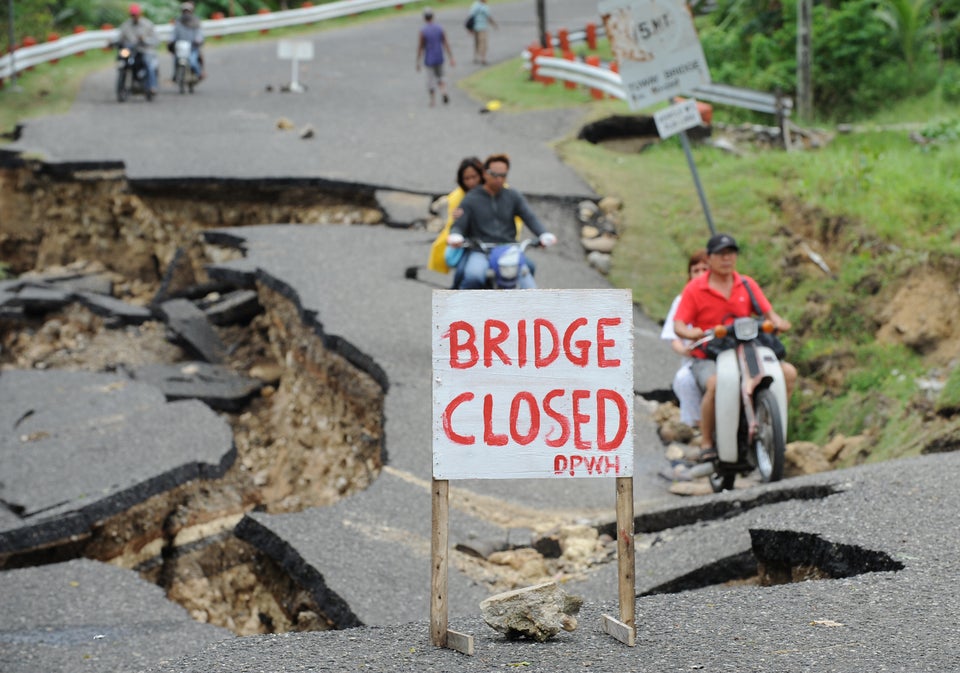This is the first USGS hazard report to factor in manmade earthquakes.
The oil and gas industry is considered the primary cause of such quakes.
Seven million Americans risk facing one in 2016.
Millions of Americans live in areas that could be affected by manmade earthquakes in the next year, according a new assessment from the U.S. Geological Survey.
The oil and gas industry's wastewater disposal methods are putting about 7 million people at risk, the federal agency announced Monday in an earthquake hazard report. It's common for companies to dispose of a drilling byproduct called wastewater by injecting it underground. This practice puts additional pressure on faults in the ground and drives them apart, scientists have observed.

"By including human-induced events, our assessment of earthquake hazards has significantly increased in parts of the United States," Mark Petersen, chief of the USGS National Seismic Hazard Mapping Project, said in a call with reporters Monday. This was the first USGS report to consider risks posed by both natural and human-induced quakes.
Arkansas, Colorado, Kansas, New Mexico, Oklahoma and Texas are the states most at risk, he added.
California has long been considered the nation's earthquake capital. However, factoring in manmade quakes gives north-central Oklahoma the highest risk of experiencing a damaging earthquake this year, with a 12 percent chance.

A 5.1-magnitude earthquake already struck the area last month, although it's unclear whether wastewater injection triggered the quake. However, wastewater injection did lead to a 5.7-magnitude quake in the area in 2011, the USGS determined.
The risk shouldn't come as a surprise to residents in most of these regions. The report notes that the rate of earthquakes first began increasing in the Central and Eastern United States in 2010 -- a phenomenon other studies have linked to increased wastewater injection in deep disposal wells in those regions.

Most of the shaking would cause only slight damage or cracking, Petersen said, but there is a chance that the 21 areas they identified could face more extensive damage.
While current research suggests that these human-induced quakes may have lower maximum magnitudes than traditional quakes, some scientists think these manmade quakes could contribute to larger earthquakes on natural fault lines.
"We are using the best available data and principles to determine when, where and how strong the ground could shake from induced earthquakes," Petersen said in a release accompanying the study. "Of course there is a level of uncertainty associated with this and all hazard maps, as we are still learning about their behavior and can only forecast with probability—instead of predict with certainty—where earthquakes are likely to occur in the future. Testing these maps after a year will be important in validating and improving the models."

